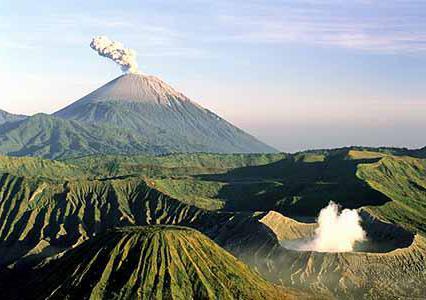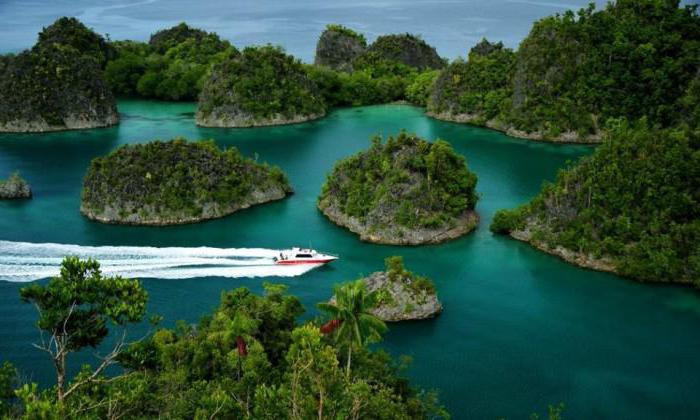The countries of Southeast Asia are perhaps the most attractive regions of the world for tourism. Traces of ancient civilizations, historical and cultural monuments, sunny beaches, rich vegetation - everything can be found here.
Southeast Asia: Geopolitics
It is difficult to pinpoint the geography of a given Asian region, as some countries are not always included in this region. For example, the eastern part of the Republic of Bangladesh and the east of India, after the Brahmaputra River, geographically belong to this region, but geopolitically they do not. Undoubtedly, some countries of continental Asia (Vietnam, Laos, Cambodia, Myanmar, Thailand) and island states surrounded by the waters of the Pacific and Indian Ocean (Malaysia, Brunei, Philippines, Singapore, Indonesia, East Timor) enter the countries of Southeast Asia.
Southeast Asia: geography
The countries of Southeast Asia are located in the equatorial as well as in the subequatorial zones, which are characterized by a constant temperature with insignificant seasonal changes. The minimum temperature is rarely below +20 degrees. The rainy season here is long, in some areas it stretches to six months. The terrain is unique: the alternation of mountain ranges and depressions, active volcanoes. One of the highest volcanoes is located on the island of Sumatra Kerenchi with a height of 3800 m. The most densely populated island in the world - Java - stores on its territory more than 130 volcanoes, of which 28 are active.

The flora of the region is very diverse , where the slopes of the mountains are covered with evergreen forests. Every resident of Southeast Asia can be proud of this nature. Exceptional and rare trees that are widely used in industry grow here: teak, sandalwood, pink and ebony. Indispensable in the production of furniture and other household items, bamboo also grows in this territory. In some areas, for example, in the Philippines, there is a contrast of vegetation: dry savannah bushes in the intermountain and dense tropical forests in the mountains.
Southeast Asia: ethnic groups
Most of the people living in southeast Asia belong to the southern Mongoloid race, which represents the assimilation of the australoid and Mongoloid races. Each of the countries of Southeast Asia is multinational. However, the number of ethnic groups represented within the same country varies. So, in Singapore there are three, and in Indonesia - about a hundred. There is a difference in the percentage of ethnic groups within one country. For example, the people of Myanmar in Burma make up about 70% of the population, and the remaining 30% include more than fifty ethnic groups living in this country. Regardless of whether a resident belongs to one or another ethnic group, every resident of Southeast Asia is an Asian, and every resident of the country of Southeast Asia is an Asian.
Population
The total number of people living in Southeast Asia is more than 480 million people, which is about 7.5% of the total population of the Earth and about 12.5% of the total population of Asia. In comparison, the entire continent of South America has approximately the same population. Thus, the countries of Southeast Asia are densely populated. The average population density is high, but the distribution across countries is different, which is due to the features of the relief. So, the most populated are coastal zones and fertile valleys.
For example, in Vietnam, 90% of the population is concentrated near the sea and rivers, and in the mountains of Laos, the average population density is 1 person per square kilometer.
Association of Southeast Asian Nations
In 1967, the countries of southeast Asia created an economic, political, and cultural organization called the Association of Southeast Asian Nations (ASEAN - transliteration of the English abbreviation). The main goal of the association is mutually beneficial cooperation with other similar world organizations. ASEAN pays particular attention to cultural and social progress, as well as the economic development of the region.
Southeast Asia: A Role in the World
Southeast Asia is located on the territory of the main sea route: South China Sea, Sunda Strait, Strait of Malacca. This is one of the reasons for the high liveliness of these places. Another, no less important reason is the large flow of tourists from around the world. The capitals of the countries of Southeast Asia have international airports, from where the path of a tourist who wants to relax begins. The tourism industry in almost the entire region is thoroughly developed. Here the most demanding tourist will find something interesting.

The capitals of ancient states, the most amazing diving in the world, amazing nature, sunny white beaches and much more. Any tourist will not be indifferent to the Pacific Islands with a special flavor, sincere atmosphere, ancient traditions. The island of Bali created an excellent service for visitors, and gentlemen with high requirements come here. There are a lot of options for outdoor activities: conquering the jungle, climbing, surfing, diving, rafting.
Supporters of cultural rest will not be deprived: temple complexes, craft villages, Aboriginal rites are unlikely to leave them indifferent. Fans of clubs and similar entertainment prefer to relax in Thailand. Cultural events - festivals - are regularly held in Singapore.
In Cambodia, you can visit the world famous Angkor Temple, where the film about Lara Croft was filmed. People go to Thailand not only to have fun and sunbathe. Pilgrims from all over the world come here to a country where Buddhist teaching is practiced.
All the features and attractions of the countries of Southeast Asia can not be counted. It remains indisputable that this is a great tourist region.